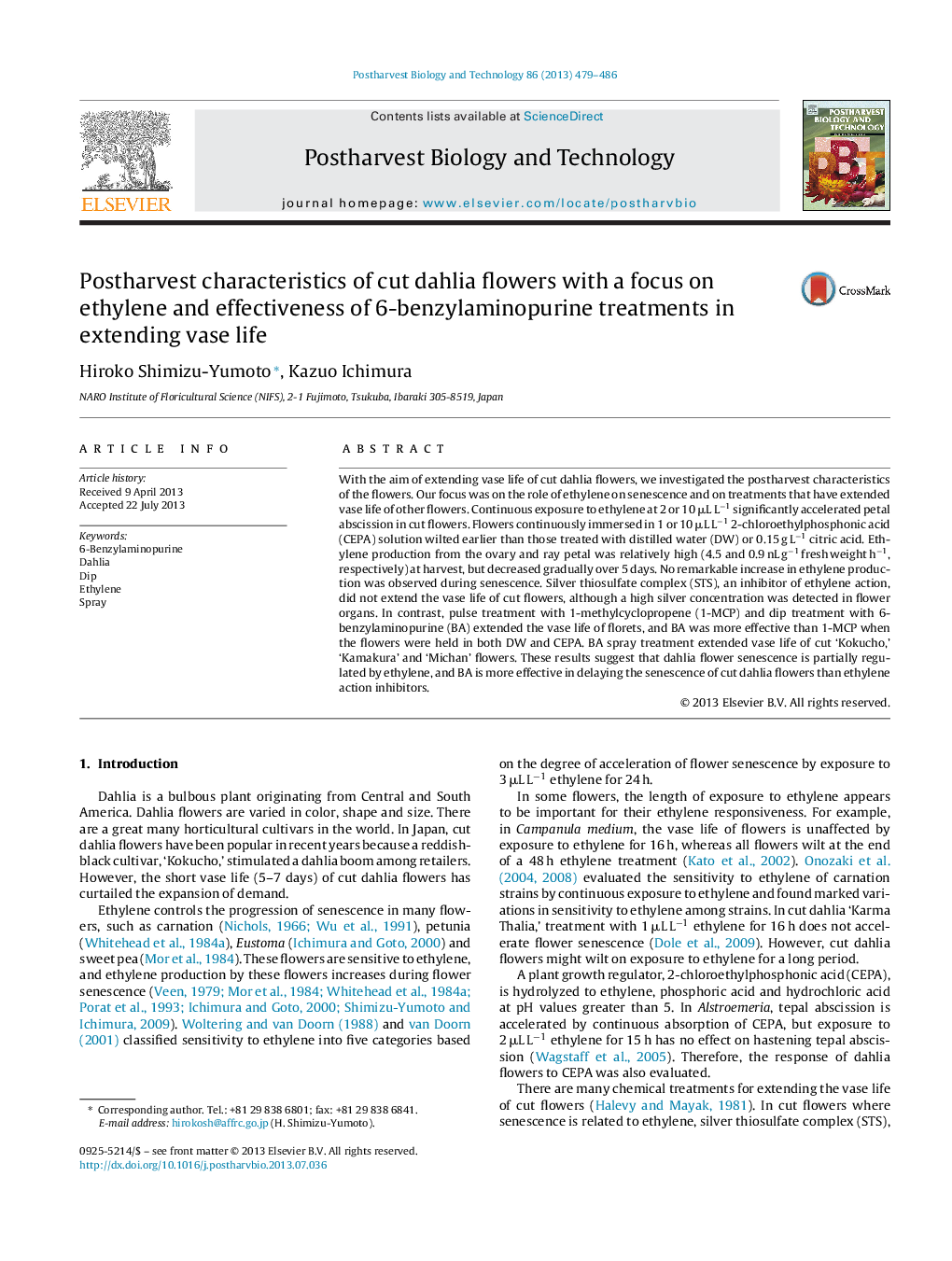| کد مقاله | کد نشریه | سال انتشار | مقاله انگلیسی | نسخه تمام متن |
|---|---|---|---|---|
| 6378823 | 1625008 | 2013 | 8 صفحه PDF | دانلود رایگان |
عنوان انگلیسی مقاله ISI
Postharvest characteristics of cut dahlia flowers with a focus on ethylene and effectiveness of 6-benzylaminopurine treatments in extending vase life
ترجمه فارسی عنوان
ویژگی های بعد از گلدان با تمرکز بر اتیلن و اثربخشی درمان های 6-بنزیل آمینوپورین در گسترش زندگی گلدان
دانلود مقاله + سفارش ترجمه
دانلود مقاله ISI انگلیسی
رایگان برای ایرانیان
کلمات کلیدی
6-بنزیلامینوپورین، دالیا، غوطه اتیلن، افشانه،
موضوعات مرتبط
علوم زیستی و بیوفناوری
علوم کشاورزی و بیولوژیک
علوم زراعت و اصلاح نباتات
چکیده انگلیسی
With the aim of extending vase life of cut dahlia flowers, we investigated the postharvest characteristics of the flowers. Our focus was on the role of ethylene on senescence and on treatments that have extended vase life of other flowers. Continuous exposure to ethylene at 2 or 10 μL Lâ1 significantly accelerated petal abscission in cut flowers. Flowers continuously immersed in 1 or 10 μL Lâ1 2-chloroethylphosphonic acid (CEPA) solution wilted earlier than those treated with distilled water (DW) or 0.15 g Lâ1 citric acid. Ethylene production from the ovary and ray petal was relatively high (4.5 and 0.9 nL gâ1 fresh weight hâ1, respectively) at harvest, but decreased gradually over 5 days. No remarkable increase in ethylene production was observed during senescence. Silver thiosulfate complex (STS), an inhibitor of ethylene action, did not extend the vase life of cut flowers, although a high silver concentration was detected in flower organs. In contrast, pulse treatment with 1-methylcyclopropene (1-MCP) and dip treatment with 6-benzylaminopurine (BA) extended the vase life of florets, and BA was more effective than 1-MCP when the flowers were held in both DW and CEPA. BA spray treatment extended vase life of cut 'Kokucho,' 'Kamakura' and 'Michan' flowers. These results suggest that dahlia flower senescence is partially regulated by ethylene, and BA is more effective in delaying the senescence of cut dahlia flowers than ethylene action inhibitors.
ناشر
Database: Elsevier - ScienceDirect (ساینس دایرکت)
Journal: Postharvest Biology and Technology - Volume 86, December 2013, Pages 479-486
Journal: Postharvest Biology and Technology - Volume 86, December 2013, Pages 479-486
نویسندگان
Hiroko Shimizu-Yumoto, Kazuo Ichimura,
